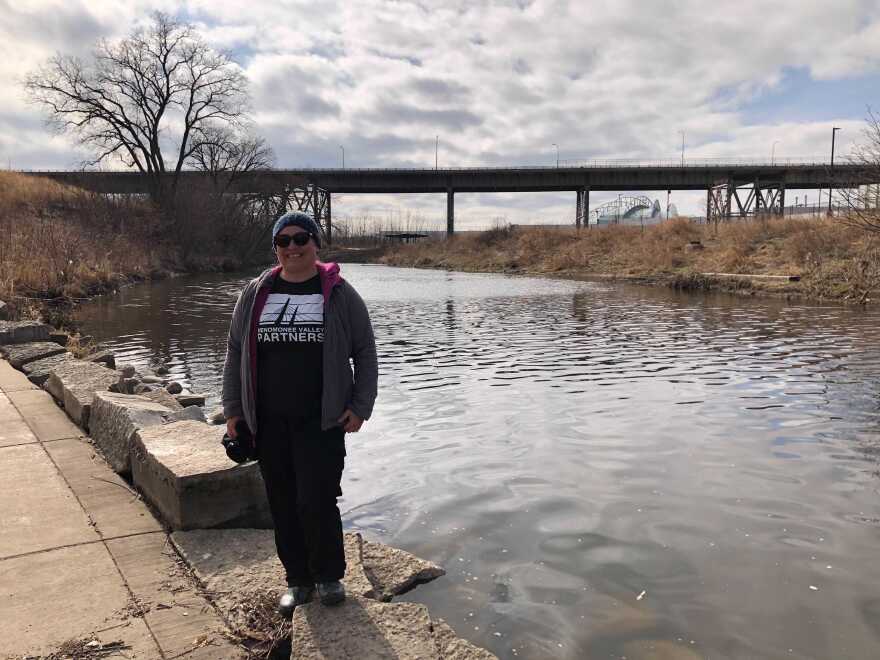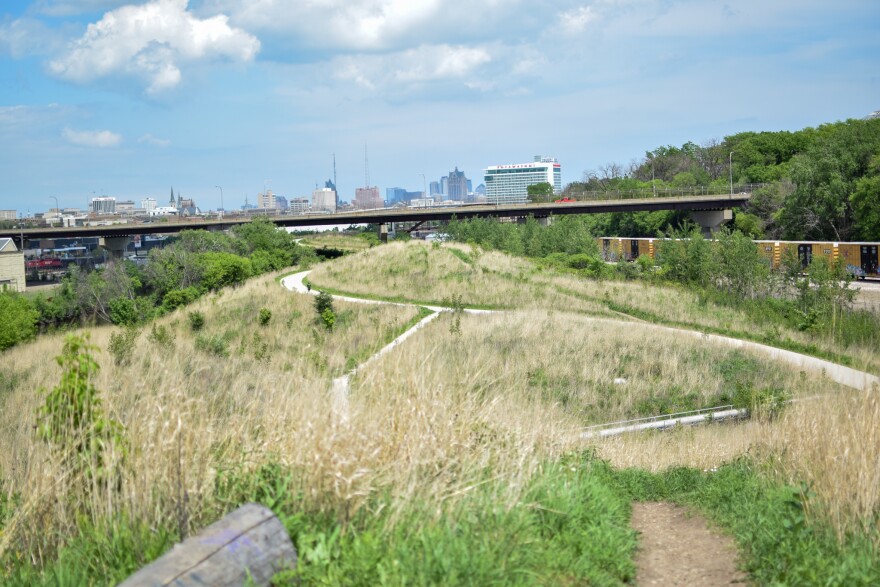Updated 2:04 p.m. CDT
As people around the world celebrate the 51st anniversary of Earth Day, in Wisconsin those celebrations come with a special nod to Wisconsinite and father of Earth Day Gaylord Nelson.
Nelson is one of the two former Wisconsin governors remembered through The Knowles-Nelson Stewardship Program — the other being Warren Knowles.
Over its 30-plus years, the program has helped preserve 650,000 acres of land across the state. Now it’s up for reauthorization. Gov. Tony Evers is proposing $70 million in funding every year for 10 years.
As Wisconsin legislators mull over the idea, WUWM's environmental reporter Susan Bence continues her Earth Week series with people who watch over unique stewarded space.
Even in early spring Lulu Lake Preserve, 30 minutes southwest of Milwaukee in the Mukwonago River watershed, feels lush.

Sarah Gatzke is the director of water conservation with The Nature Conservancy, which oversees the preserve.
“We’re in a woodland but we’re in a transitional zone, so there are pockets of prairie and pockets of woodland, so it diversifies the habitat out here and creates an amazing place for biodiversity to flourish,” she explains.

Gatzke says the watershed supports 50 fish species.
“Many other watersheds in the state support something like 20 or 30. And the reason that we have such an abundance is we have sort of a Goldilocks situation. We have warm water and we’ve got cold water habitat, so we have many species that can make a home here,” she explains.
But this parcel is far from untouched. A former rail line still lays on the property. Long ago, crews harvested ice off spring-fed Lulu Lake.
“A railroad shoot picked up the ice and took it to Chicago and then all the way to New Orleans,” Gatzke says.
Years later the property was home to a boy’s camp. She says, “After that a pharmaceutical company bought it to host retreats.”
Then, Gatzke says the stars aligned, and The Nature Conservancy was able to purchase and preserve the space — in part thanks to the Knowles-Nelson Stewardship Program.
It offset the cost of the purchase.
“If there weren’t a Knowles-Nelson Stewardship Fund, we would still be using donor dollars to protect lands. ...We wouldn’t have the flexibility to take advantage when someone is willing to sell an area that is of significance to the natural environment, it would be much more difficult for us to act in a timely fashion and be able to secure that,” says Gatzke.
Ducks Unlimited has protected and restored more than 15,000 acres throughout Wisconsin with the help of partners, like The Nature Conservancy.
Regional biologist Brian Glenzinki says most, if not all of those projects, would not have been possible without the Knowles-Nelson Stewardship Program.

“It’s a really pretty amazing machine that requires all of these cogs to be spinning, and certainly Knowles-Nelson Stewardship is a huge cog in the machine to make it run,” he says.
Glenzinski is hoping the state Legislature reauthorizes the program for a full 10 years.
“It’s tough for organizations to negotiate, secure and protect a parcel in two years, let alone do all the restoration and all the other work that goes along with it is what’s needed to really make the program run efficiently,” he says.
The Knowles-Nelson Stewardship Program supports more than wetlands a duck might love or a spring-fed lake fish thrive in. The program also fuels community parks and bike trails.
According to Gathering Waters, an alliance of Wisconsin land trusts, nine out of 10 households in the state reside within a mile Knowles-Nelson project.
Corey Zetts is the executive director of Menomonee Valley Partners and says the Knowles-Nelson program helped create an improbable green oasis in Milwaukee.
“We’re down here right at the Menomonee River in the heart of Three Bridges Park that opened in 2013, before that the land here along us was a rail yard that was vacant a good 30 years before the park was constructed,” she says.

Zetts says year one, zero people used the park — but as trees grew and native plants filled in, people from surrounding neighborhoods gravitated to it.
“So residents of neighborhoods both on the near south side, near north side, really all around come to use Three Bridges Park for biking, walking, dog walking, fishing, kayaking, canoeing or just bird watching or quiet reflection,” she says.
People need greenspace, says Zetts.
“These are some of the most densely developed neighborhoods in Wisconsin and walking distance or a few minutes biking distance, it’s been really important. Just in the last year, we’ve seen 174,000 people come to park to walk or bike,” she says.
That's a 474% increase since 2019. You don’t have to ask Corey Zetts if she thinks Knowles-Nelson Stewardship funds were well-spent in Milwaukee’s Menomonee Valley.
Have an environmental question you'd like WUWM's Susan Bence to investigate? Submit below.
_








